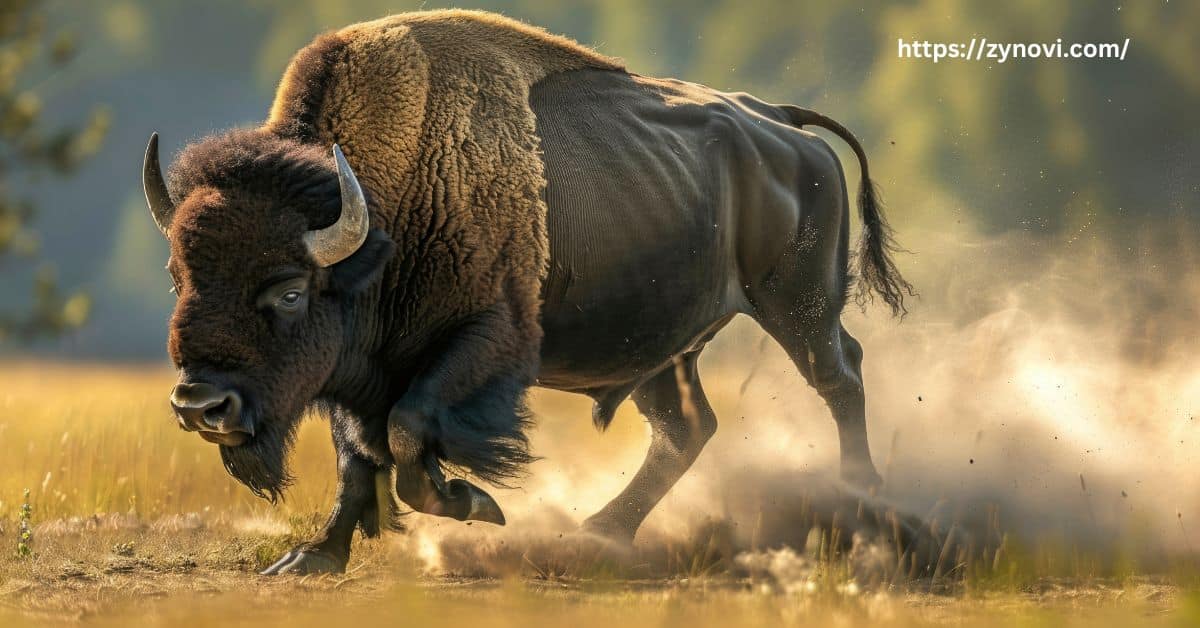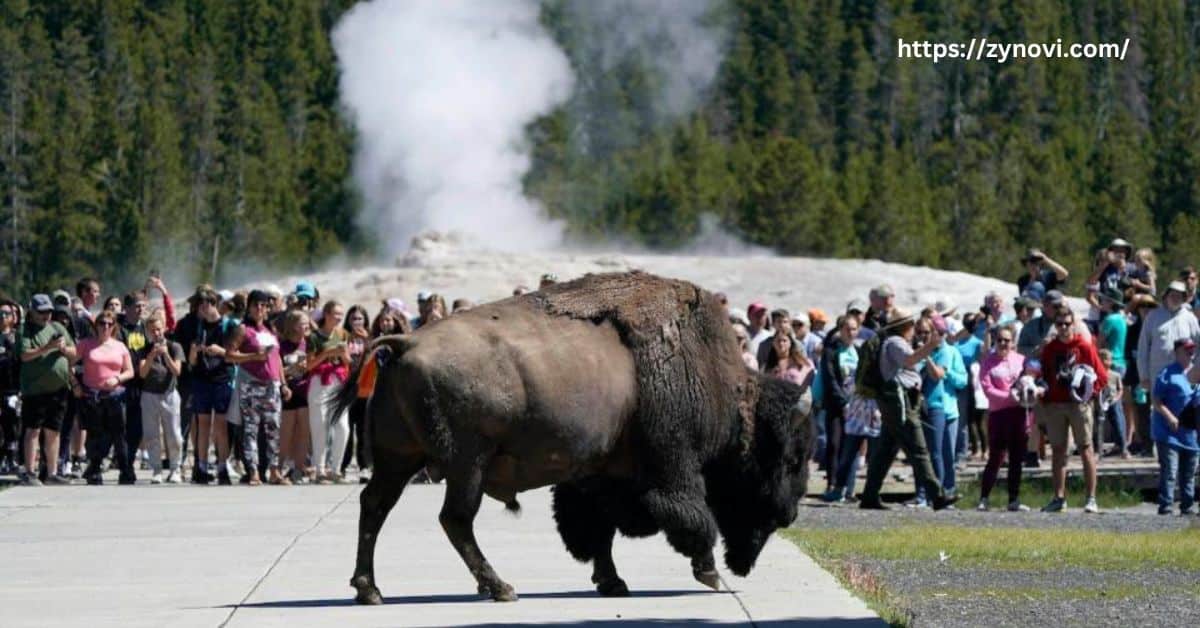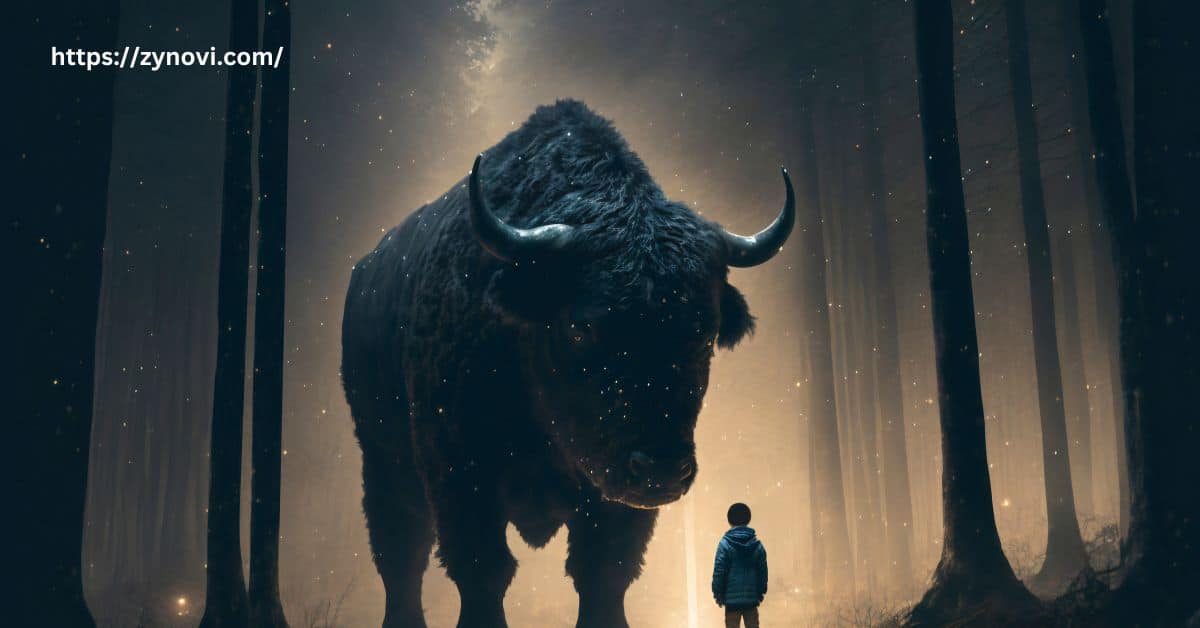Do Bison Attack Humans? Bison can attack humans, if feel threatened, provoked, or during protective behaviors like guarding their calves.
If you’ve ever wondered about the risks of encountering these massive creatures, you’re not alone. Bison, while generally peaceful, can become aggressive if provoked. Understanding their behavior is key to staying safe in places like Yellowstone National Park or Custer State Park.
In this article, we’ll find out why bison attack, the signs to watch for, and how to protect yourself. Whether you’re a wildlife enthusiast or a traveler, this guide will help you navigate the wild with confidence. Keep reading to learn how to stay safe and avoid dangerous encounters!
What Are Bison?
Bison are large, herbivorous mammals belonging to the Bovidae family. They play a significant role in North American ecosystems, particularly in the Great Plains. Often referred to as the American buffalo, bison are a keystone species with profound ecological and cultural importance.
Overview of Bison Species
Bison are an integral part of North America’s natural heritage, and they are divided into two primary species:
- Plains Bison: These bison are predominantly found across the vast Great Plains, ranging from the United States to Canada. They are slightly smaller than their wood bison counterparts and are often seen grazing in open grasslands and prairies.
- Wood Bison: Known for their larger size and more muscular build, wood bison inhabit the remote forests of Canada and parts of Alaska. They are less commonly observed due to their preference for secluded habitats.
Physical Characteristics
Bison are distinguished by their:
| Physical Characteristic | Description |
|---|---|
| Massive Bodies | Bison can weigh up to 2,000 pounds (900 kg), making them one of the heaviest land mammals. |
| Shaggy Dark Brown Fur | Their thick, woolly fur offers excellent insulation, protecting them from extreme cold and snow. |
| Large Shoulder Hump | The prominent hump houses strong neck muscles, aiding in grazing through deep snow or soil. |
| Curved Horns | Used for defense and competition, especially during mating season (rut). |
Habitat and Range
Bison primarily thrive in protected areas such as Yellowstone National Park, Custer State Park, and Wind Cave National Park, where conservation efforts help sustain their populations.
Historically, bison roamed vast areas from Mexico to Canada, dominating the Great Plains.
However, habitat loss due to agriculture and urban development, coupled with extensive overhunting in the 19th century, led to a significant decline in their numbers, pushing them to the brink of extinction before recovery efforts began.
Do Bison Attack Humans?

While bison attacks are rare, they do happen. Understanding bison behavior and their triggers can reduce the risk of dangerous encounters.
Bison Behavior Explained
Bison are typically calm creatures, dedicating much of their time to grazing on grasses and shrubs. However, their territorial instincts and defensive behavior can quickly turn them aggressive if they perceive a threat. Understanding their warning signs is crucial:
- Pawing the ground: A clear indicator of agitation, this behavior shows they’re preparing to defend themselves.
- Snorting: Loud snorts signal distress or irritation, often serving as a warning to back away.
- Tail flicking: Frequent tail movements indicate heightened tension and possible aggression.
- A lowered head: This posture, combined with the display of their horns, shows they’re ready to charge if provoked.
Common Reasons for Bison Attacks
- Provocation by Humans: Bison often attack when humans approach too closely, invade their space, or attempt to touch them, perceiving these actions as threats.
- Protecting Calves: During the calving season, bison mothers exhibit strong maternal instincts, fiercely guarding their young against any perceived danger.
- Rut (Mating Season): Male bison display heightened aggression while competing for mates, often engaging in fights and charging anything nearby.
- Startled Reactions: Loud noises, sudden movements, or unexpected encounters can trigger a startled bison to charge in self-defense.
Real-Life Bison Incidents
- Incident at Yellowstone (2015): A tourist ignored safety guidelines and approached within 10 feet of a bison to take a selfie. The startled animal charged, resulting in severe injuries, including broken ribs and lacerations.
- Incident at Custer State Park (2020): A motorcyclist was charged and tossed by a protective bison after getting too close to its calf. The individual suffered serious injuries but survived the encounter.
- Incident at Yellowstone (2021): A visitor disregarded safety protocols and ventured too close to a grazing bison. The animal gored the individual, causing life-threatening injuries, highlighting the importance of maintaining a safe distance.
Statistics on Bison Attacks
According to the National Park Service:
- Annual Incidents in Yellowstone: Yellowstone National Park records 1-2 bison-related incidents each year, often stemming from unsafe interactions with wildlife.
- Common Cause of Injuries: The majority of injuries occur when visitors ignore the safe distance rule of 25 yards (23 meters), underestimating the animal’s speed and unpredictability.
Types of Bison Attacks
Bison attacks can be sudden and forceful, often involving high-speed charges, powerful horn thrusts, or trampling under their immense weight.
Common injuries from bison attacks include:
- Goring Injuries: The bison’s sharp horns can inflict deep puncture wounds, severe lacerations, and even internal damage. These injuries can be life-threatening due to blood loss or organ damage.
- Trampling Injuries: When a bison charges and knocks someone down, its weight can cause broken bones, head trauma, and crushing injuries that may lead to long-term complications.
- Tossing Injuries: Bison have been known to lift and hurl individuals with their horns, sending them several feet into the air. The impact from such falls can result in fractures, spinal injuries, or concussions.
Though bison attacks are typically defensive, their immense strength makes them a serious danger to anyone who gets too close.
Are Bison Attacks Dangerous?

Yes, bison attacks can result in severe injuries, such as broken bones, lacerations, internal injuries, and concussions.
Bison are incredibly strong and fast animals, capable of charging at speeds up to 35 miles per hour (56 km/h) and jumping 6 feet (1.8 meters) in height.
Their size, strength, and unpredictable nature make them formidable opponents when they feel threatened.
Comparison with Other Wildlife
| Animal | Average Attacks Per Year | Injury Severity |
|---|---|---|
| Bison | 1-2 | High (goring, trampling) |
| Bears | 5-10 | High (mauling) |
| Wolves | Rare (<1) | Moderate (bites) |
How to Prevent From Bison Attacks
Preventing bison attacks starts with respecting their space and understanding their behavior.
Best Practices for Viewing Bison Safely
- Maintain a Safe Distance: Always stay at least 25 yards away from individual bison and 50 yards from groups or herds to avoid provoking them and to ensure your safety.
- Photography Tips: Use binoculars or telephoto lenses to capture photos from a safe distance, minimizing the risk of getting too close to these powerful animals.
- Stick to Designated Paths: Always stay on designated trails and avoid straying into areas where bison are present. Additionally, refrain from making sudden movements to avoid startling the animals.
Recognizing Warning Signs
- Pawing the Ground: When bison start pawing the ground, it’s a clear sign that they feel threatened or agitated, signaling potential aggression.
- Snorting and Tail Flicking: Snorting and flicking their tail are common warning signs before a bison may charge. These behaviors indicate that the animal is becoming increasingly irritated or defensive.
Park-Specific Safety Guidelines
- Follow Park Instructions: Always adhere to park rangers’ instructions and safety guidelines, especially in areas like Yellowstone National Park, to minimize risks of encounters.
- No Feeding or Touching: Do not feed or attempt to touch bison, as this can provoke them and compromise both your safety and the animals’ well-being.
What to Do If a Bison Charges?
If you find yourself in the path of an aggressive bison, quick thinking is crucial.
Immediate Actions
- Move Away Slowly: If you find yourself too close to a bison, move away slowly without turning your back. Sudden movements may provoke a charge.
- Use Natural Barriers: If possible, place trees or rocks between you and the bison for protection. These can act as a shield and help keep a safe distance.
- Lie Flat if Knocked Down: If a bison knocks you down, lie flat and play dead. This reduces the chance of further injury by appearing non-threatening.
Pro Tips for Survival
- Avoid Loud Noises or Sudden Movements: Loud noises or quick movements can startle bison and trigger a charge. Stay calm and move with purpose.
- Maintain Awareness: Always stay aware of your surroundings when in bison territory. Knowing where the bison are and their body language can give you time to react safely.
FAQs
Are bison friendly to humans?
Bison are generally peaceful but can become aggressive if they feel threatened or provoked.
What to do if a bison chases you?
Move away slowly and find shelter behind a natural barrier, like a tree or rock.
Are bison aggressive?
Bison can be aggressive, especially during mating season or when protecting their calves.
How common are bison attacks?
Bison attacks are rare but do occur, with 1-2 incidents reported annually in Yellowstone National Park.
Conclusion: Do Bison Attack Humans?
Bison are not inherently aggressive, but their defensive animal behavior can make them dangerous when provoked. Following safety guidelines and respecting their space can minimize risks. As majestic symbols of North America, bison deserve admiration from a safe distance.
By understanding bison behavior, staying informed about bison attack statistics, and practicing caution in places like Yellowstone National Park, you can enjoy the beauty of these iconic animals while keeping yourself safe.










